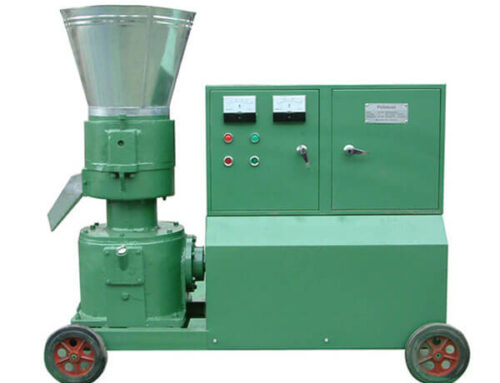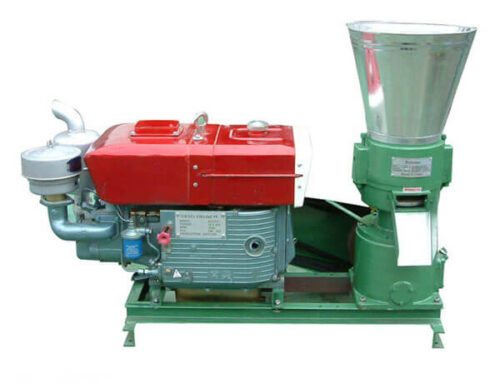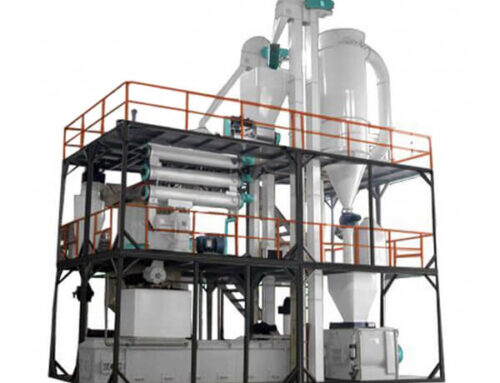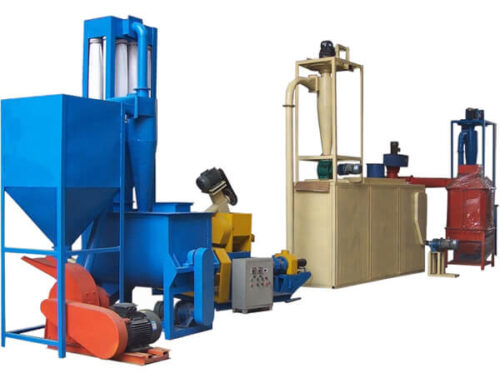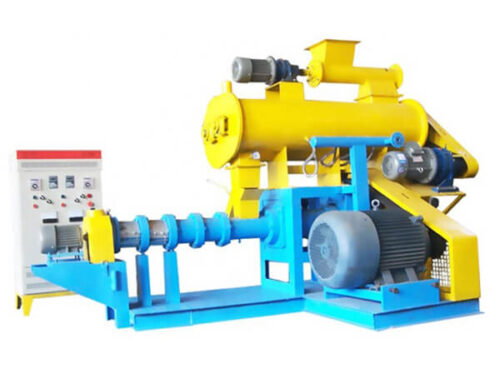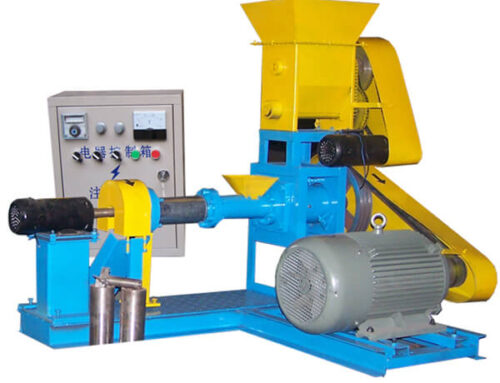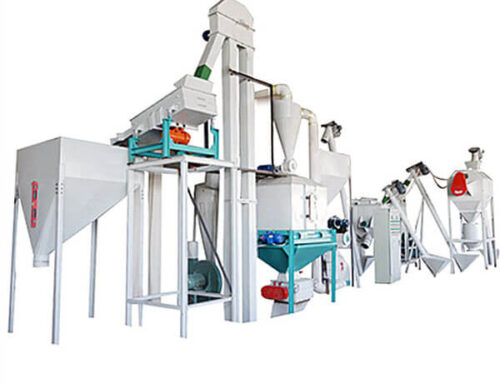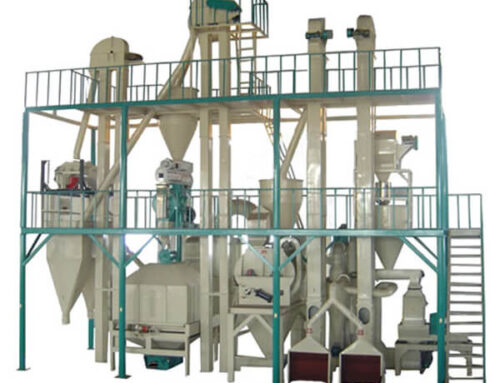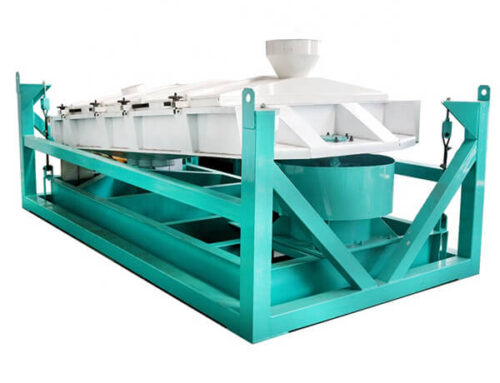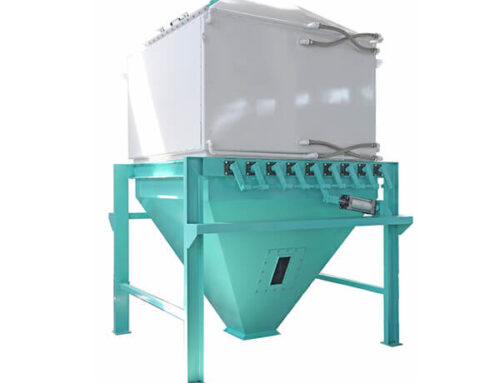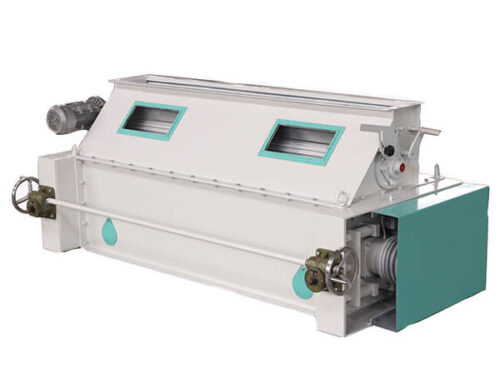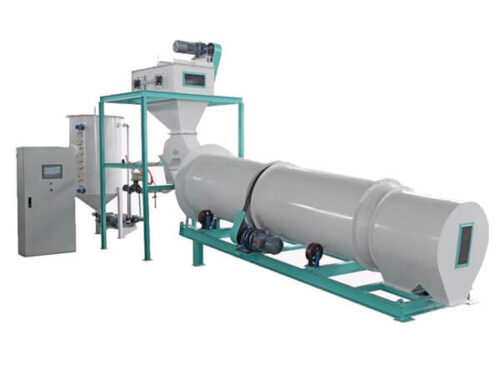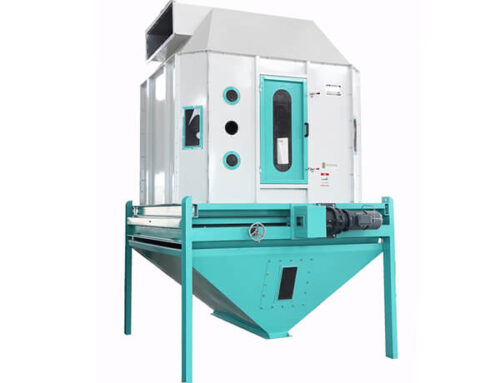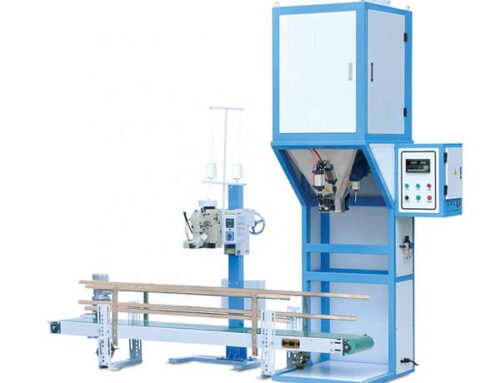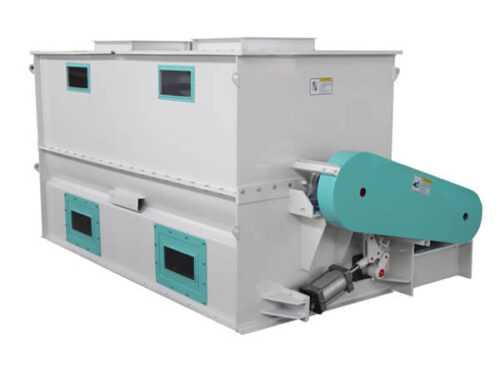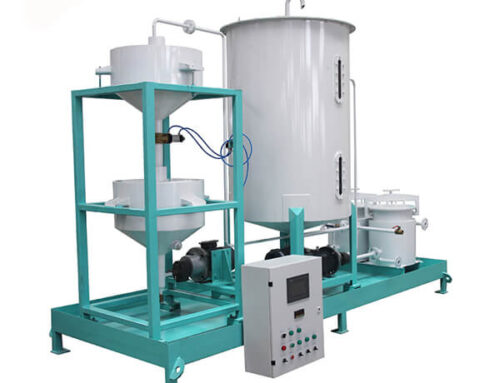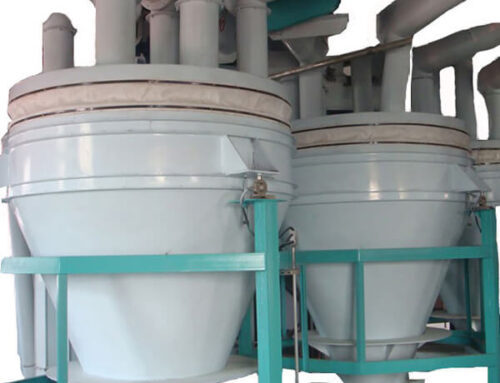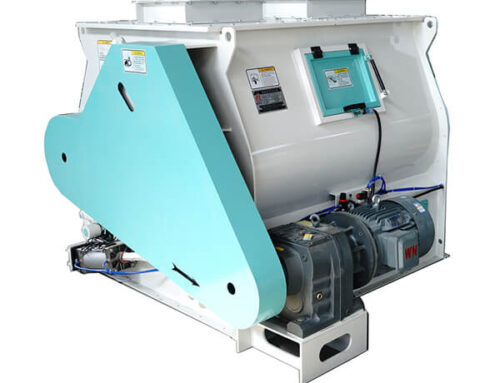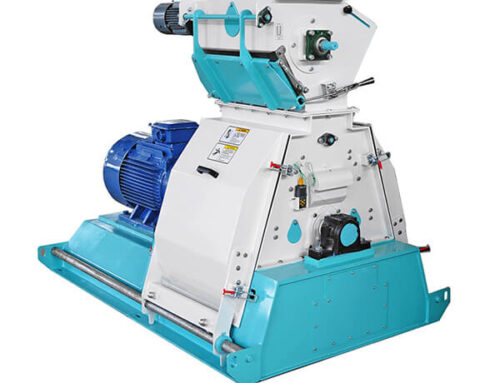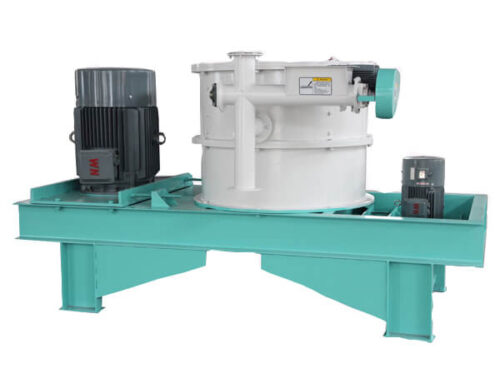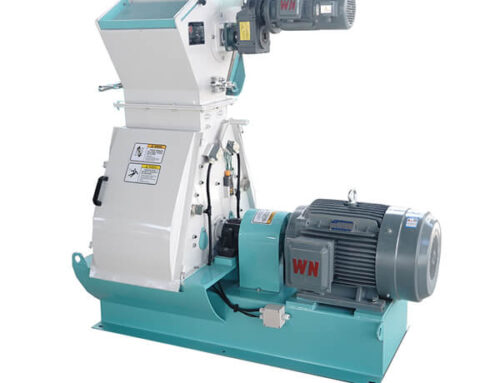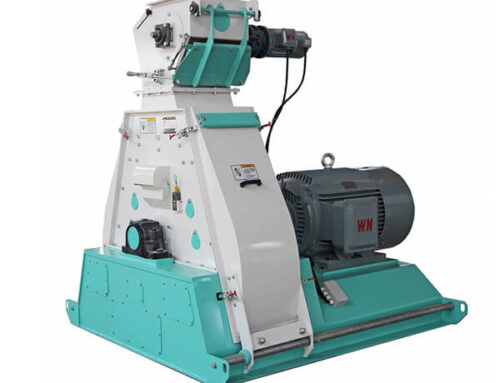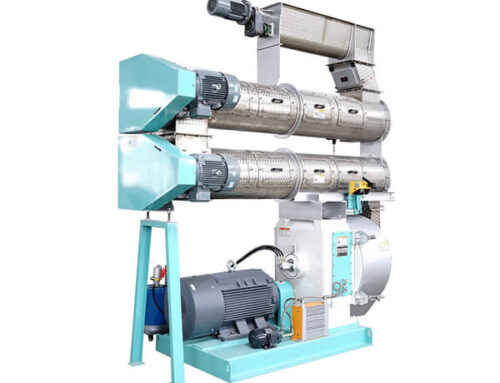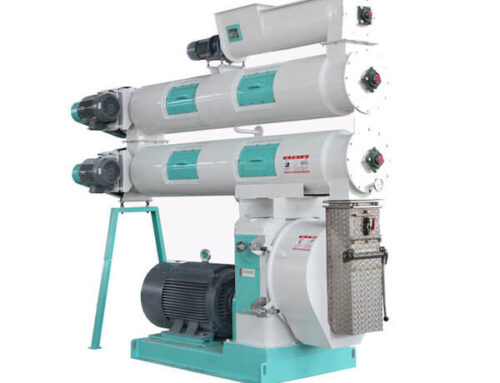The Process of Pet Food Production Line
Though different pet types determine that the details are different from the machines, the main machines are the same. The main machines are crushing machine, mixing machine, pellet machine, pet food pellet crumbler, pet feed cooling machine, pet feed pellet packaging machine.


1.Crushing Process
Raw material crushing machine is needed if the size of the raw material exceeds 6mm. You can put the raw materials into the mixer directly if they meet the requirement.
2.Mixing Process
This process can sufficiently blend the crushed raw materials and further improve the pellet quality during pelleting. So this step is to prepare for the next.
3.Pelletizing Process
This process is important in the whole line. The mixed raw materials flow into the pellet machine from the mixer and then be made into pet food pellets through extrusion.
4.Cooling Process
The pellet cooler is mainly used for reducing the pellet temperature and moisture content.
5.Pellet Crumbling Process
Different pets eat different sizes of pet food pellets, so the pellet crumbler can make different sizes of pellets you need.
6.Pellet Packing Process
In order to store and transport, the packaging machine is necessary. This machine can automatically weigh and pack the pet food pellets into bags.
Pet Feed Market
People like pets, because can give companionship to people who are living alone and elderly adults. The world’s cat and dog numbers about 600 million. Only in the United States, there are approximately 86.4 million cats, approximately 78.2 million dogs, and 5.3 million rabbits while Europe is 178 million cats and dogs. The other survey shows that 38% of Canadian households have a cat, and 35% have a dog, and 24% of people own cats or dogs in Europe.
In the face of so many pets, the demand for pet food is enormous and the pet food market sees positive in recent years. Some pet analysts reported that global pet food retail sales grew 4% in 2015, reached 22.59 million metric tons, to a total of about US$70 billion.
North America is the largest pet food region, in which about 300 manufacturers produce more than 7 million tons of pet food each year in the American, with growing at an annual rate of 3.5 percent, from $21.7 billion in 2011 to $26.6 billion in 2017. At a total of US$20 billion sales in 2015, Europe ranks second in the pet food region that grows at an annual rate of 4.4 percent from 2011 to 2017, including $4 billion each for Germany, UK and France. The most other pet food markets also highlighted the growth in 2015, which are Brazil ($ 5 billion), Japan($4.8 billion), Australia ($2 billion), Russia ($1.5 billion), China ($1.3 billion), Argentina ($1 billion), South Africa ($300 million) and India ($200 million).
Advantages of Pet Pelleted Food
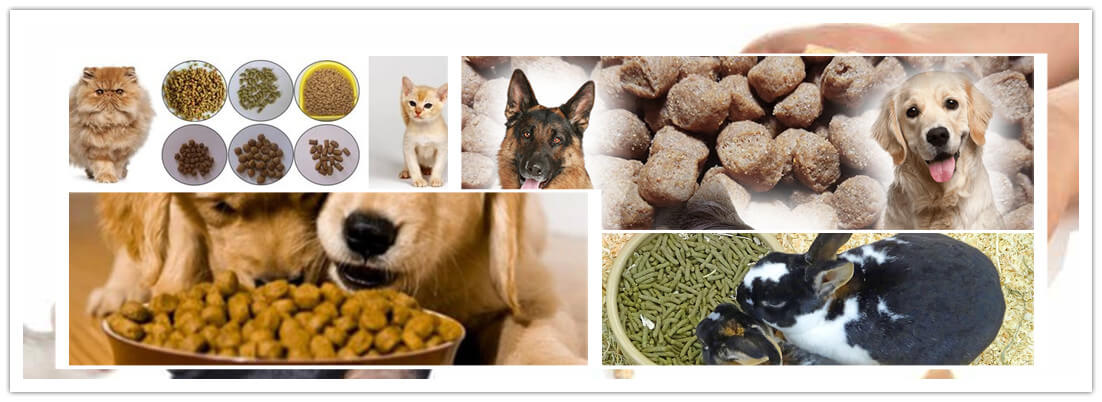
There are various options to choose from more than 3,000 different pet foods for your pets, which include the pelleted, canned, dry, and semi-moist types, as well as a snack. Choosing a tasty, well-balanced diet makes pets healthier, more energy, happier, and better performing. Obviously, pet food pellets can do it.
1. Pet pelleted food is made up of various compounds such as vitamins, proteins, minerals, fibers, sugars, and acids, which is not only can meet nutrient demand but also can prevent the segregation of ingredients.
2. Pet pelleted food can improve nutrient utilization due to the heat treatment of the raw material ingredients. And it is easier to ingestion for the pet.
3. Pet pelleted food can save storage space and reduce transportation costs.
4. During grinding and pelleting, dust and raw material waste are reduced.
Stages of Dog Growth and Development
Pet, as opposed to sport animals, poultry, or livestock, is an animal kept for offering their owners emotional or physical benefits. The most popular pets are dogs, cats, birds, or aquatic pets, people also keep rabbits, rodents, reptiles, and so on. When people keep a pet, they may think that what are the stages of pet growth and development? As for various pets, even though the time is different from birth to mature, the basic steps are similar. Take the dog as examples.
1.Neonatal period: when the dog is at birth, they can touch, taste, and begin learning some simple social skills, coordination. During this period, they are most influenced by their mother.
2.Transitional period: during this period, their eyes are open and hearing develops, furthermore, their teeth start coming in, they stand, walk, and even start to bark.
3.Socialization period: During this stage, dogs are aware of their surroundings and start really enjoying playtime. Good experiences with people will play a large role in how they continue to interact.
4.Ranking period: dogs at this time are most influenced by their playmates and start to understand and use a ranking in terms of submission and dominance. Teething and related chewing also happen around this time.
5.Adolescence: this time, the dog understands that he has a pack, which may consist of both humans and dogs, and his behavior will be most influenced by this group, and a second chewing stage will likely begin.
6.Adult period: this stage, every aspect of the dog has developed mature.
7.Senior period: the dog body function begins to decline at this time.
In order to better grow at each stage for the pet, the diet is a critical part of the pet’s life. Pet food generally consists of meat, meat byproducts, cereals, grain, vitamins, and minerals, but a tasty, well-balanced quality diet makes pets healthier, more energy, happier, and better performing while a poor diet can result in many health problems. For example, eating spoiled food, or food allergies may result in vomiting. Too high grain or sugar in the diet is bad too, which can cause ear infections. Based on the pet type and growth stage, a pet requires different or special nutritional needs. The pet food pellets have a potential necessity for better meeting the nutritional requirement of a restricted specialty diet options. We also use the dog as an example.
Dog’s unique nutritional requirement is all kinds of age, gender, breed, activity, metabolism, environment, and temperament. Puppies should be fed a high-quality diet that meets their specific nutritional demand in their active growth phase, and puppy requires more than 28% of protein and energy density of less than 3.5 kcal ME/g DM. Puppies should be fed three to four times a day, therefore you should consider spacing it out by feeding ½ cup three times a day if you are currently feeding ¾ a cup of puppy food twice a day. The smaller meal is easy to digest for the puppy and energy levels don’t peak and fall so much with frequent meals. As for the growing dogs, their diet should be comprised of proteins, vitamins, minerals, carbohydrates, and fats in correct proportions when you process the dog food pellet.

